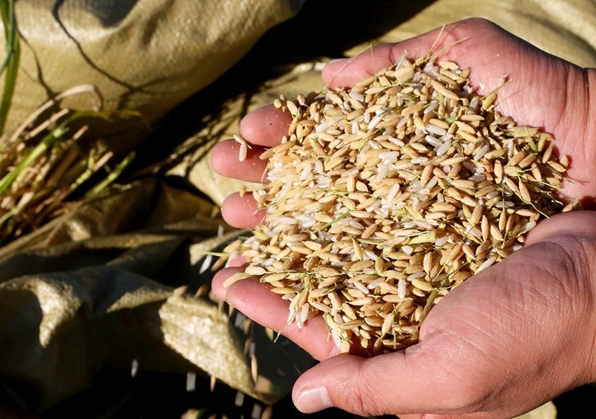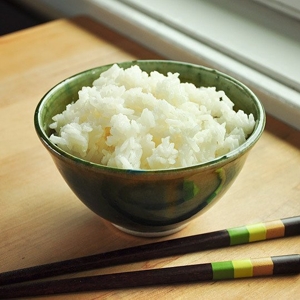Rising carbon dioxide levels appear to be reducing the nutritional value of dietary staples, such as Wheat and Rice, on which much of the world relies for it’s sustenance. This trend could put millions of people at risk of a long list of diseases caused by vitamin, mineral and protein deficiencies…
 Rice, just flailed off the stalk. How much less nutritious will it be by 2050
Rice, just flailed off the stalk. How much less nutritious will it be by 2050
due to rising carbon dioxide levels in the atmosphere?
According to a new report recently published in the journal Nature Climate Change, 175 million people could become zinc-deficient and 122 million people protein-deficient by 2050. The study, by a team at the Harvard T.H. Chan School of Public Health, also found that more than 1 billion women and children could lose a large amount of their dietary iron intake, putting them at increased risk of anemia and other diseases.
What they did…
For this new study, researchers wanted to develop the most robust and accurate analysis possible of the global health burden of CO2-related nutrient shifts in crops in 151 countries. To do so, they created a unified set of assumptions across all nutrients and used more detailed age- and sex-specific food supply data sets to improve estimates of the impacts across 225 different foods. The study built on previous analyses by the researchers on CO2-related nutritional deficiencies, which looked at fewer foods and fewer countries.
What they found…
More than 2 billion people worldwide are estimated to be deficient in one or more essential nutrients. In general, humans tend to get a majority of key nutrients from plants: 63% of dietary protein comes from vegetable sources, as well as 81% of iron and 68% of zinc. It has been shown that higher atmospheric levels of CO2 result in less nutritious crop yields, with concentrations of protein, iron, and zinc being 3%-17% lower when crops are grown in environments where CO2 concentrations are 550 parts per million (ppm) compared with crops grown under current atmospheric conditions, in which CO2 levels are just above 400 ppm. Atmospheric carbon dioxide levels are protected to to reach 550 ppm my 2050.
The bottom line…
“One thing this research illustrates is a core principle of the emerging field of Planetary Health,” said study Lead Author Sam Myers, who directs the Planetary Health Alliance, co-housed at Harvard Chan School and Harvard University Center for the Environment. “We cannot disrupt most of the biophysical conditions to which we have adapted over millions of years without unanticipated impacts on our own health and wellbeing.”
My take…
I agree with Myers. But I also think it’s important to look a how the reduction of nutrition value in staple crops fits into and affects the Bigger Picture.
If the study’s predictions about the erosion of the nutritive value of staple crops around the world is accurate, that trend just compounds the greater issue of how to feed 9 billion people in 2050. Chinese scientists, in particular, are developing new Salt-resistant and high-yield Rice strains and other researchers are using traditional cross-breeding along with genetic engineering to adapt foods we all know and love to a warmer climate. But all those efforts may not be sufficient to reach the 2050 goal.
As I’ve said before, we all need to examine our eating habits and the choices we make at the supermarket. In particular, we need to look at how to stay healthy by getting more fruits and Veggies into our diet. That might mean more of us using our back yards and balconies to grow our own produce. I’ll miss the flowers, but I’ll be grateful to have enough to eat. At the same time, we need to wean ourselves off of our expensive meat-source protein habit and onto vegetable proteins, like Rice and Beans, or Quinoa, which offers a complete protein for the human diet.
All of which just underlines the need for all of us to support the food security efforts that governments, non-governmental organizations and researchers are embarking on right now.
~ Maggie J.

